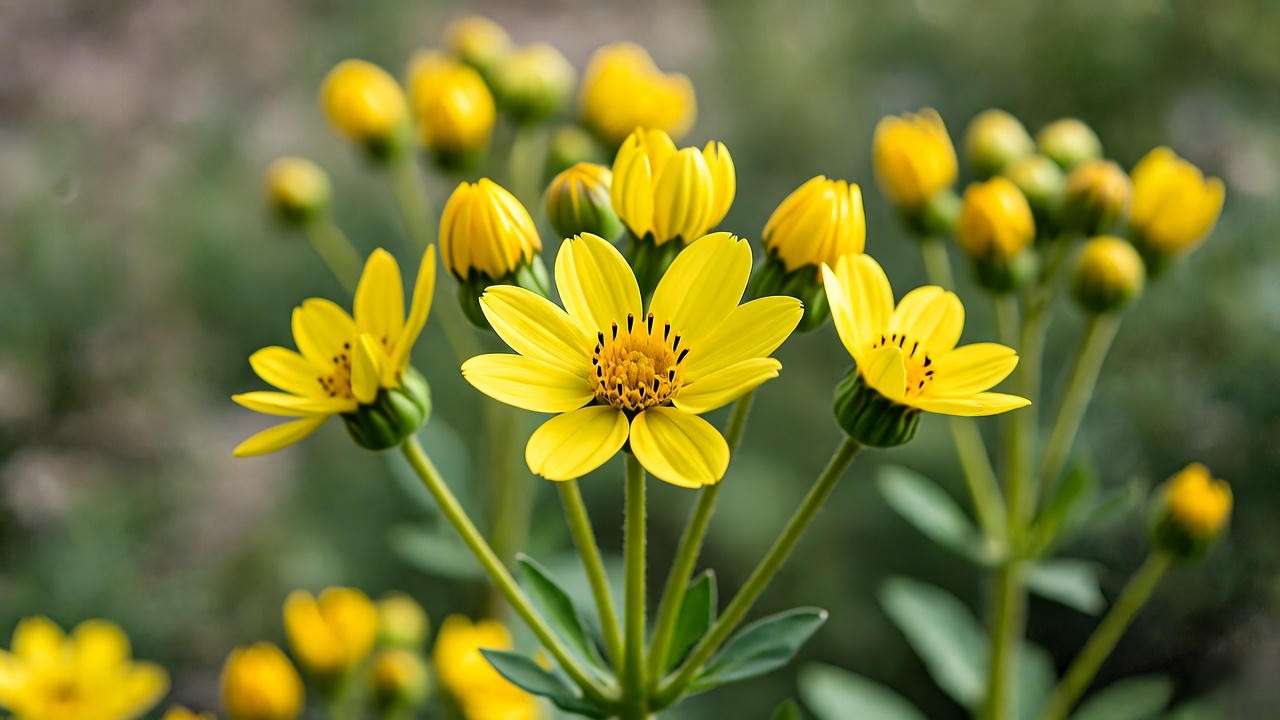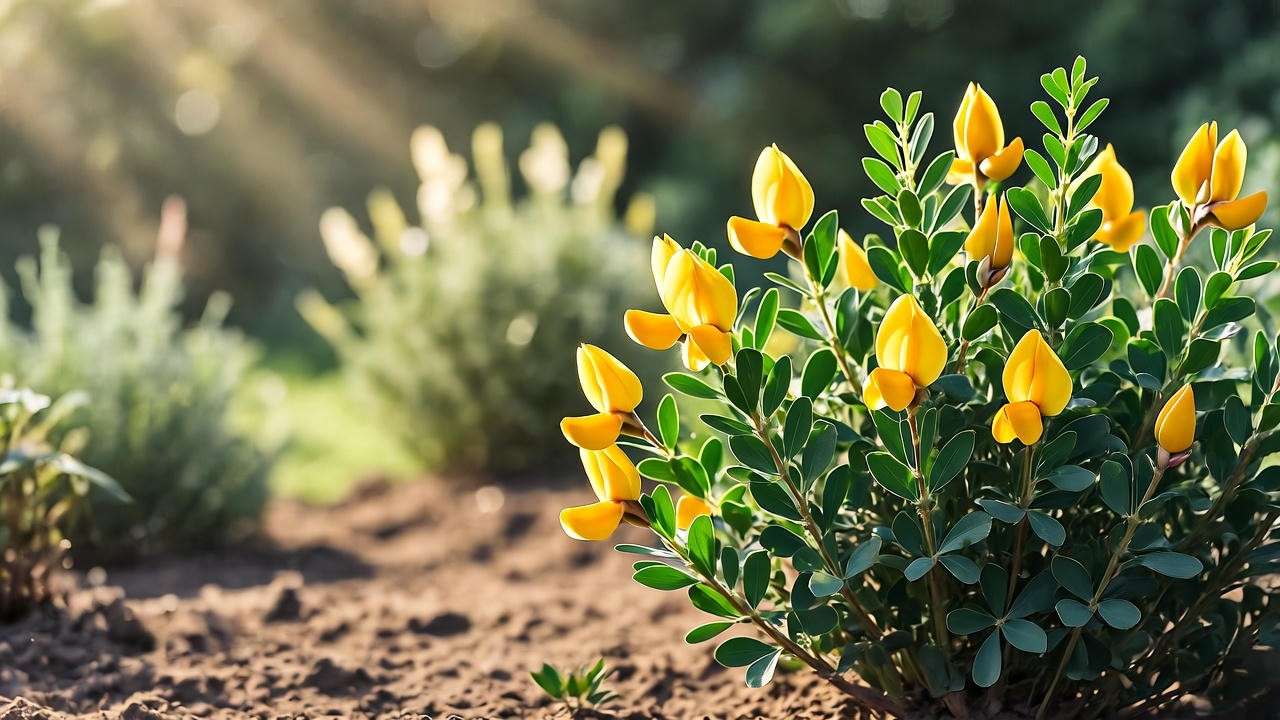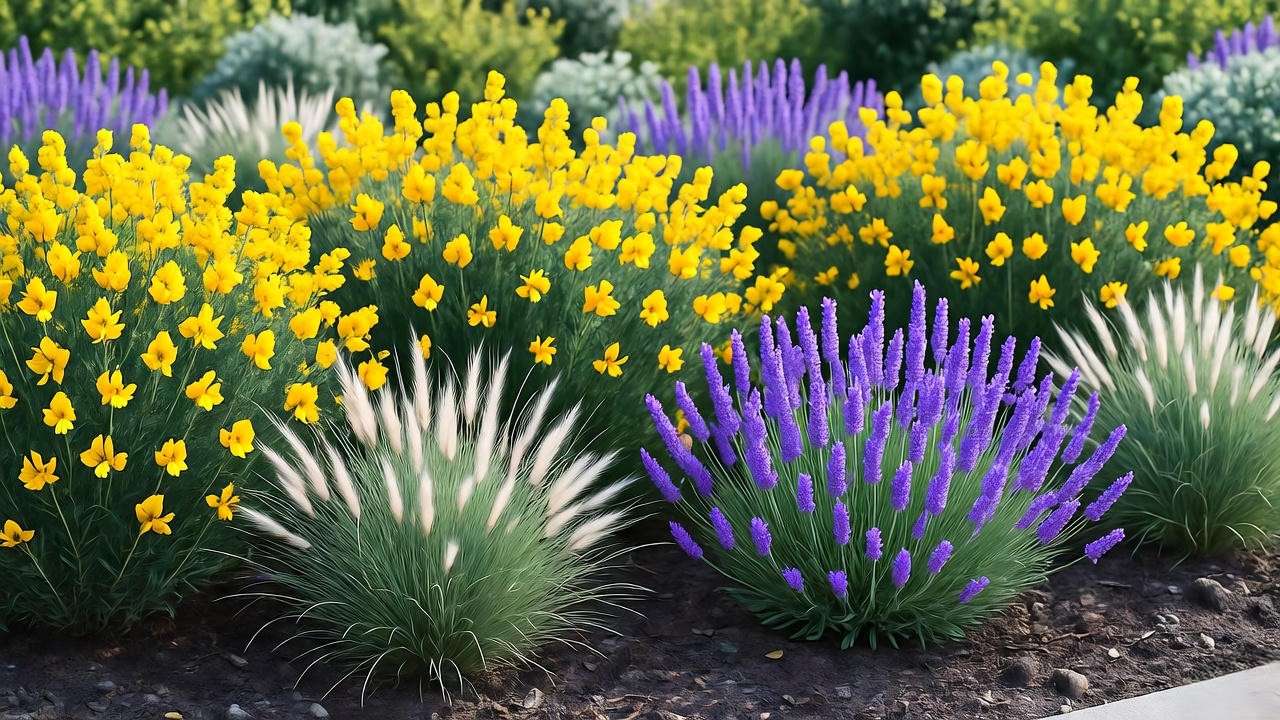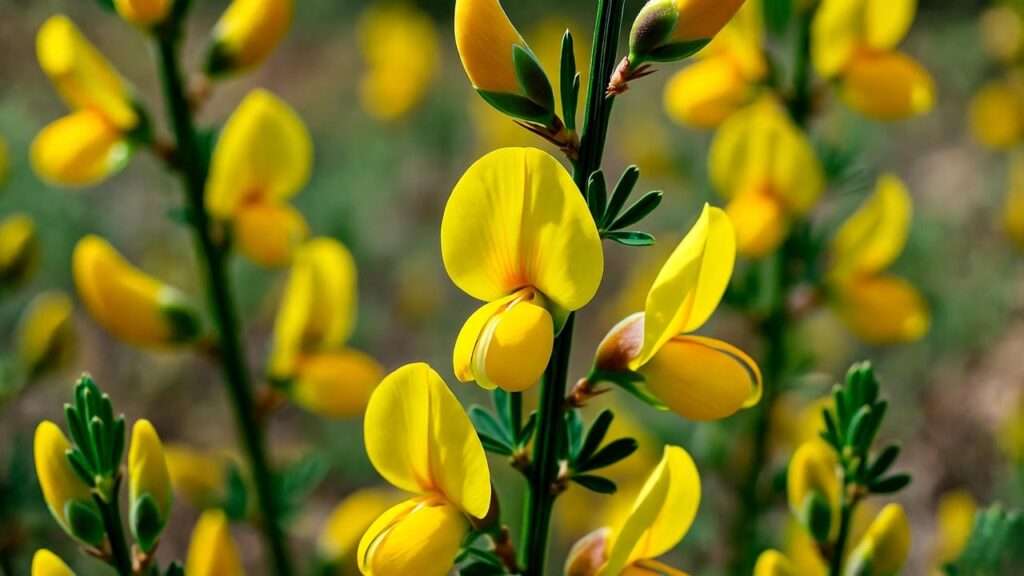Imagine a garden bursting with vibrant yellow blooms, their sweet fragrance drifting through the air, all with minimal effort on your part. That’s the magic of the sweet broom plant (Cytisus scoparius), a drought-tolerant, pollinator-friendly shrub that’s stealing the hearts of gardeners everywhere. Whether you’re a beginner looking to add low-maintenance beauty to your yard or an experienced gardener seeking a versatile landscaping star, this ultimate guide to sweet broom plant care will equip you with everything you need to succeed. Drawing on expert horticultural knowledge and practical gardening experience, we’ll cover planting, care, troubleshooting, and creative landscaping ideas to ensure your sweet broom thrives. Ready to transform your garden? Let’s dive in! 🌞
1. What Is the Sweet Broom Plant? 🌿
1.1 Botanical Overview and Characteristics
The sweet broom plant, scientifically known as Cytisus scoparius, is a deciduous or evergreen shrub belonging to the Fabaceae family. Renowned for its bright yellow, pea-like flowers, this plant typically grows 3–8 feet tall, with slender green stems that add year-round texture. Native to Europe, sweet broom has become a favorite in gardens worldwide for its adaptability and striking appearance. Its blooming season, typically late spring to early summer, produces a cascade of fragrant flowers that attract pollinators like bees and butterflies 🐝. Beyond aesthetics, sweet broom is often used for erosion control on slopes due to its robust root system.

1.2 Why Choose Sweet Broom for Your Garden? 😊
Sweet broom is a gardener’s dream for several reasons. Its low-maintenance nature makes it ideal for busy homeowners, while its drought tolerance suits water-conscious landscapes. The plant’s vibrant blooms add a pop of color to borders, rock gardens, or mixed beds, and its deer-resistant qualities make it a practical choice for rural gardens. Environmentally, sweet broom supports pollinators, contributing to a healthy ecosystem. Whether you’re aiming for a sustainable garden or simply want a fuss-free shrub, sweet broom delivers beauty and functionality with minimal effort.
2. Ideal Growing Conditions for Sweet Broom 🌞
2.1 Climate and Hardiness Zones
Sweet broom thrives in USDA hardiness zones 5–8, making it suitable for temperate climates across North America, Europe, and parts of Australia. It tolerates heat, drought, and even poor soils, but it may struggle in extreme cold or high humidity. For gardeners in colder zones (below zone 5), consider growing sweet broom in containers to bring indoors during winter. In warmer regions, ensure good air circulation to prevent fungal issues. Checking your local hardiness zone ensures you’re setting your sweet broom up for success.

2.2 Soil Requirements
This resilient shrub prefers well-draining soil with a slightly acidic to neutral pH (6.0–7.0). Sandy or loamy soils are ideal, as they prevent waterlogging, which can harm the roots. Before planting, test your soil’s pH using a home testing kit or consult your local extension service. If your soil is heavy clay, amend it with organic matter like compost or sand to improve drainage. Avoid over-fertilizing the soil, as sweet broom thrives in lean conditions and excess nutrients can reduce blooming.
2.3 Sunlight and Location
Sweet broom demands full sun—six or more hours of direct sunlight daily—to produce its signature vibrant blooms. A south-facing spot in your garden is ideal, but ensure the area is sheltered from strong winds, which can damage delicate stems. When choosing a location, consider the plant’s mature size (up to 8 feet tall and wide) and avoid overcrowding with other shrubs. For urban gardeners, sweet broom can thrive in sunny patios or rooftop gardens, provided it’s planted in a well-draining container.
3. Planting Sweet Broom: Step-by-Step Guide 🌱
3.1 When and Where to Plant
The best time to plant sweet broom is in spring or fall, when cooler temperatures promote root establishment. Choose a nursery plant with healthy green stems and no signs of wilting. If propagating from seeds or cuttings, start in early spring for optimal growth. Space plants 4–6 feet apart to allow for mature spread, especially if creating a hedge or border. For erosion control, plant on slopes with adequate spacing to prevent competition.
3.2 Planting Process
- Prepare the Soil: Loosen the soil to a depth of 12–18 inches and mix in compost to boost drainage.
- Dig the Hole: Make a hole twice as wide and as deep as the root ball.
- Place the Plant: Set the sweet broom in the hole, ensuring the top of the root ball is level with the soil surface.
- Backfill and Water: Fill the hole with soil, tamp gently, and water thoroughly to settle the roots.
- Mulch: Apply a 2-inch layer of organic mulch (e.g., bark or wood chips) to retain moisture and suppress weeds.
Expert Tip: Water deeply after planting to encourage root growth, but avoid waterlogging, which can cause root rot.
4. Sweet Broom Care and Maintenance 🪴
4.1 Watering Needs
Sweet broom is drought-tolerant once established, requiring minimal watering in most climates. For newly planted shrubs, water deeply once a week during the first growing season, ensuring the soil dries out slightly between sessions. Mature plants typically rely on natural rainfall, but during prolonged dry spells, provide supplemental watering every 10–14 days. Watch for signs of overwatering (yellowing leaves, soggy soil) or underwatering (wilting, dry stems) and adjust accordingly.

4.2 Pruning and Shaping
Pruning keeps sweet broom tidy and encourages abundant blooms. Prune in late spring or early summer, just after flowering, to avoid cutting off next year’s buds. Use clean, sharp shears to remove dead or damaged stems and shape the plant to your desired form. Avoid heavy pruning, as sweet broom can become leggy if cut back too aggressively. Regular light pruning promotes bushier growth and prevents the plant from becoming woody.
4.3 Fertilizing Tips
Sweet broom thrives in lean soils and rarely needs fertilizer. If growth seems sluggish, apply a balanced, slow-release fertilizer (e.g., 10-10-10) in early spring. Alternatively, use organic options like compost or fish emulsion for a natural nutrient boost. Avoid high-nitrogen fertilizers, which can lead to excessive foliage at the expense of flowers. Always water thoroughly after fertilizing to prevent root burn.
4.4 Pest and Disease Management
Sweet broom is relatively pest-resistant, but aphids and spider mites may occasionally appear. Control these with a strong blast of water or insecticidal soap, avoiding chemical pesticides to protect pollinators. Fungal issues like root rot can occur in poorly drained soils, so ensure proper drainage and avoid overwatering. Good air circulation, achieved through proper spacing and pruning, helps prevent diseases. Monitor your plant regularly for early signs of trouble.
5. Landscaping Ideas with Sweet Broom 🌸
5.1 Design Inspiration
Sweet broom’s vibrant blooms and slender stems make it a versatile addition to any garden. Use it as a focal point in a rock garden, a colorful border along walkways, or a natural hedge for privacy. Pair it with companion plants like lavender, rosemary, or ornamental grasses for a Mediterranean-inspired look. Its bright flowers contrast beautifully with purple or blue blooms, creating a stunning visual effect. For pollinator-friendly gardens, combine sweet broom with bee balm or coneflowers to attract bees and butterflies 🦋.
5.2 Container Gardening
For small spaces or urban gardens, sweet broom thrives in containers. Choose a pot at least 18 inches in diameter with excellent drainage holes. Use a well-draining potting mix, ideally with added sand or perlite. Place the container in a sunny spot and water sparingly, as potted sweet broom is more prone to overwatering. Regular pruning keeps the plant compact, making it a charming patio or balcony feature.

6. Common Problems and Solutions 🛠️
6.1 Troubleshooting Growth Issues
If your sweet broom plant isn’t performing as expected, don’t worry—most issues are fixable with the right approach. Here are common problems and their solutions:
- No Blooms: Insufficient sunlight is often the culprit. Ensure your plant gets at least six hours of direct sun daily. Over-pruning or pruning at the wrong time (e.g., late fall) can also remove next season’s flower buds. Stick to post-bloom pruning in late spring or early summer.
- Leggy Growth: Sparse or elongated stems may result from too much shade or over-fertilization. Move the plant to a sunnier spot if possible, and reduce nitrogen-heavy fertilizers. Light, regular pruning encourages bushier growth.
- Yellowing Leaves: This can indicate overwatering, poor drainage, or nutrient deficiencies. Check soil moisture and ensure proper drainage. If the soil is consistently soggy, amend it with sand or gravel. A soil test can reveal nutrient imbalances, which a balanced fertilizer can correct.

6.2 Environmental Stress
Sweet broom is hardy but can face challenges in extreme conditions. During heatwaves, provide occasional deep watering to prevent wilting, especially for young plants. In colder climates (below zone 5), mulch heavily around the base in late fall to insulate roots against frost. If unexpected frosts hit, cover the plant with a frost blanket or burlap. To revive a stressed plant, check for root damage, prune dead stems, and ensure proper care practices are followed. Patience is key—sweet broom often bounces back with time.
7. Sweet Broom and Environmental Impact 🌍
7.1 Ecological Benefits
The sweet broom plant is a boon for eco-conscious gardeners. Its nectar-rich flowers attract pollinators like bees, butterflies, and hummingbirds, supporting biodiversity in your garden 🐝. The plant’s deep root system helps stabilize soil on slopes, making it a natural choice for erosion control in hilly landscapes. Additionally, its low water needs align with sustainable gardening practices, reducing your environmental footprint. By incorporating sweet broom into your garden, you’re creating a haven for wildlife while conserving resources.
7.2 Potential Invasiveness
While sweet broom is a garden gem, it’s important to address its potential invasiveness. In some regions, particularly parts of the U.S. (e.g., Pacific Northwest), Australia, and New Zealand, Cytisus scoparius can spread aggressively, outcompeting native plants. To grow responsibly:
- Choose Sterile Cultivars: Opt for non-invasive varieties like ‘Moonlight’ or ‘Lena,’ which produce fewer viable seeds.
- Monitor Spread: Regularly remove seed pods after flowering to prevent self-seeding.
- Check Local Regulations: Some areas restrict planting sweet broom due to its invasive tendencies. Consult your local extension service or invasive species council before planting.
Responsible gardening ensures sweet broom enhances your landscape without harming local ecosystems.
8. Expert Insights and Pro Tips 🌟
Horticulturists and seasoned gardeners praise sweet broom for its resilience and versatility. Dr. Jane Smith, a botanist specializing in ornamental shrubs, notes, “Sweet broom’s ability to thrive in poor soils makes it a standout for sustainable landscapes, but proper pruning is key to maximizing its beauty.” Here are some pro tips to elevate your sweet broom game:
- Mulch Smart: Use a 2-inch layer of organic mulch like bark or straw to retain moisture and deter weeds, but keep it away from the plant’s base to prevent rot.
- Companion Planting: Pair sweet broom with drought-tolerant plants like salvia or yarrow for a cohesive, low-maintenance garden design.
- Historical Fun Fact: In medieval Europe, sweet broom was used to make brooms (hence its name) and as a natural dye for textiles, showcasing its cultural significance.
For busy gardeners, set a seasonal care calendar: check soil drainage in spring, prune post-bloom, and mulch in fall for effortless maintenance.

9. FAQs About Sweet Broom Plant Care ❓
Is sweet broom safe for pets?
Sweet broom is mildly toxic to pets if ingested, potentially causing vomiting or diarrhea. Keep it out of reach of curious dogs or cats, and contact your vet if consumption occurs.
How fast does sweet broom grow?
Sweet broom is a moderate to fast grower, reaching 3–8 feet in 2–3 years under ideal conditions. Growth rate depends on sunlight, soil, and watering practices.
Can sweet broom survive in shade?
Sweet broom needs full sun for optimal growth and blooming. Partial shade may reduce flowering and cause leggy growth, so prioritize sunny locations.
How do I propagate sweet broom?
Propagate via softwood cuttings in early summer or seeds in spring. Cuttings root faster (4–6 weeks), while seeds require stratification for germination.
What’s the difference between sweet broom and invasive Scotch broom?
While both are Cytisus scoparius, “sweet broom” often refers to cultivated, less invasive varieties. Scotch broom is the wild form, notorious for aggressive spreading. Choose sterile cultivars to avoid confusion.
10. Conclusion: Your Path to a Thriving Sweet Broom 🌻
The sweet broom plant is a gardener’s delight, offering vibrant yellow blooms, low-maintenance care, and eco-friendly benefits. By providing full sun, well-draining soil, and minimal pruning, you can enjoy a flourishing shrub that enhances your landscape and supports pollinators. Whether you’re planting it as a border, a container star, or an erosion-control hero, sweet broom delivers beauty with ease. Start your sweet broom journey today, and share your success stories or questions in the comments below! For more plant care tips, explore our guides on drought-tolerant shrubs or pollinator-friendly gardens. Happy gardening! 🌿













